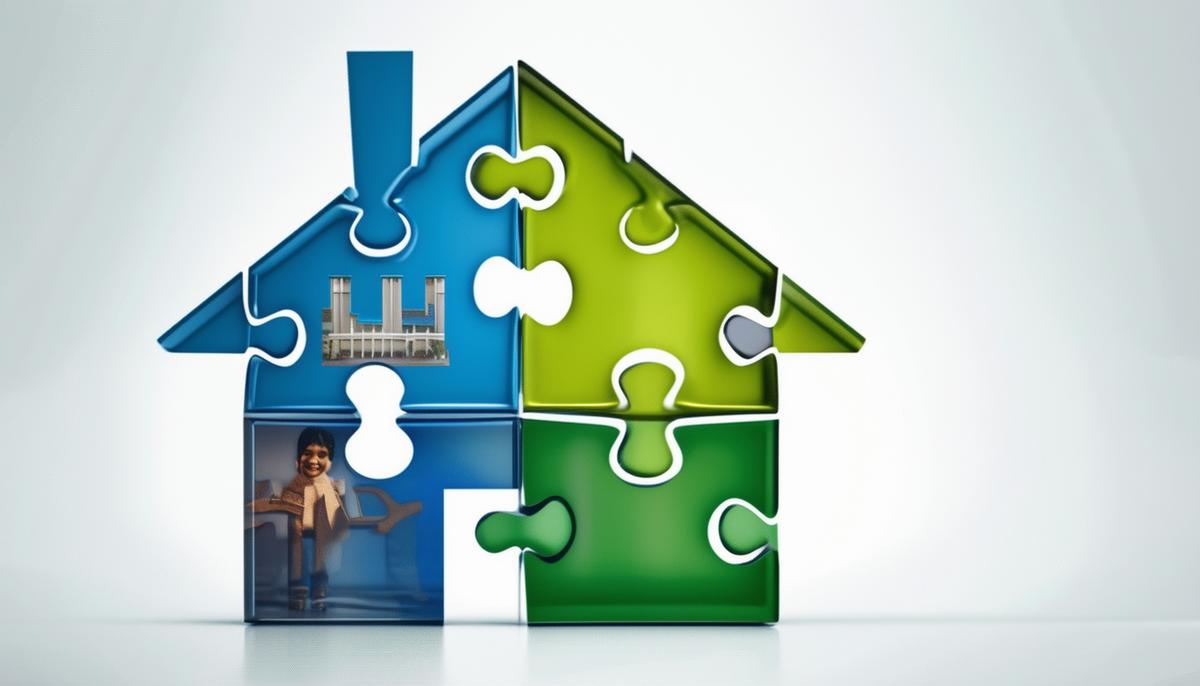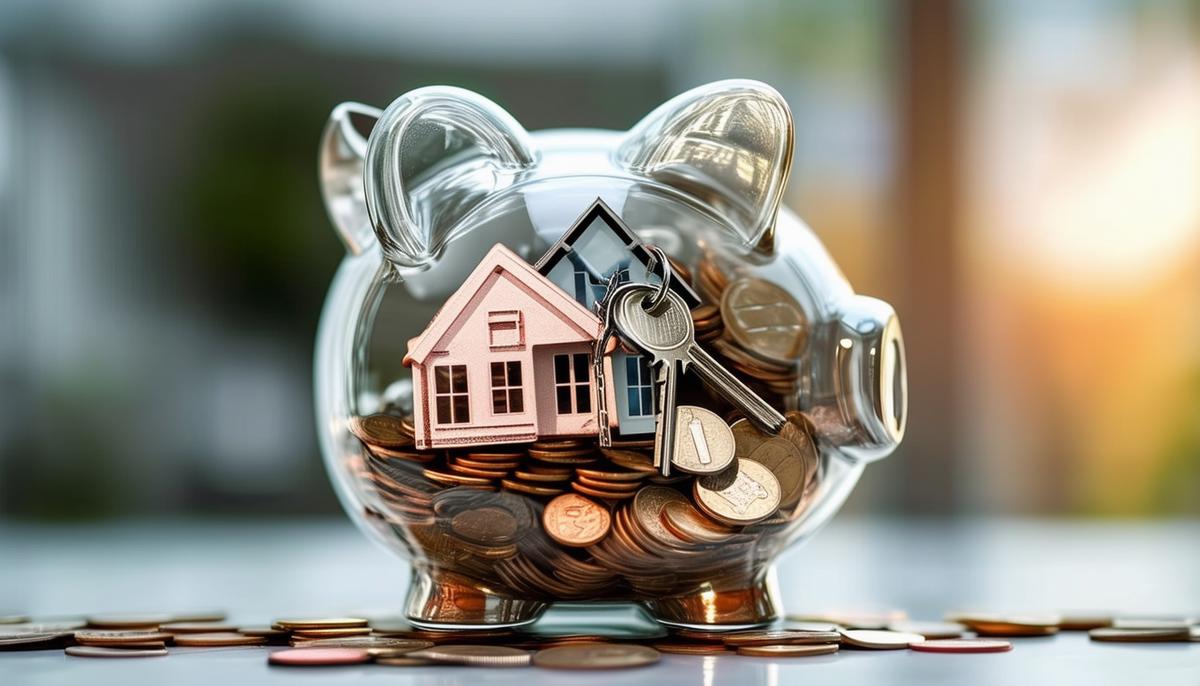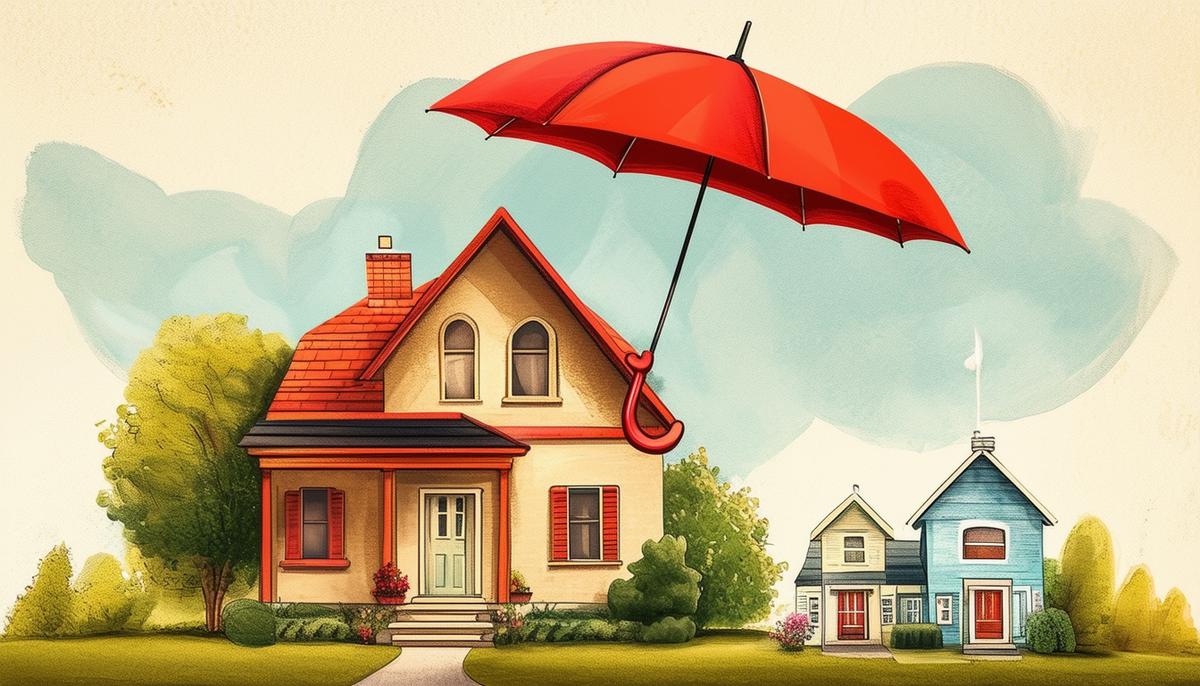Buying a home is an exciting and significant financial decision. From calculating your mortgage payment to understanding various loan types, there's a lot to consider. This journey can be both educational and enjoyable if you approach it with the right mindset.
Factors That Determine Your Mortgage Payment
When calculating your monthly mortgage payment, focus on these key factors: home price, down payment, mortgage interest rate, and loan type.
Home Price
The home price is the amount you agree to pay for the house. This figure determines a large portion of your monthly payment. In places like California, prices can vary widely, so it's important to know what you're getting into.
Down Payment
The down payment is the cash you put down upfront. A 20% down payment helps you avoid Private Mortgage Insurance (PMI). However, some loans like FHA or VA loans allow for low or no down payments.
Mortgage Interest Rate
The interest rate is the lender's fee for lending you the money. Rates fluctuate with the market and depend heavily on your credit score. A better score typically gets you a better rate.
Loan Type
Each loan type has its own set of rules. For example, a 30-year fixed-rate loan offers stability with consistent payments, while an adjustable-rate mortgage (ARM) might have lower initial rates but potential increases later.
Breaking Down Monthly Mortgage Payments
Here's how these factors combine into your monthly payment:
Principal and Interest
The principal is the loan amount, and the interest is the lender's charge. Fixed-rate loans keep this steady, while ARMs may change after their initial period.
Home Loan Amortization Table:
| Month | Principal | Interest | Total Payment |
|---|---|---|---|
| 1 | $305 | $620 | $925 |
| 12 | $310 | $615 | $925 |
| 120 | $400 | $525 | $925 |
| 240 | $500 | $425 | $925 |
Property Taxes and Insurance
Property taxes and homeowner's insurance are often included in your monthly payment through an escrow account. These can vary by location.
PMI
If your down payment is below 20%, private mortgage insurance is added to protect the lender. It usually drops off once you have 20% equity.
HOA Fees
Include HOA fees if you're in a community with shared amenities or special upkeep requirements.
To calculate your monthly mortgage payment, add up your principal, interest, property taxes, insurance, PMI, and any HOA fees.

Home Price
The price of the home you choose directly impacts your monthly mortgage payments. The more expensive the home, the larger your loan amount (assuming your down payment percentage stays the same), resulting in higher monthly payments.
A less expensive home means a smaller loan amount, leading to more manageable monthly payments. All the financials—interest, taxes, insurance—are calculated based on that lower price, making it easier on your wallet.
Opting for a pricier home means everything gets scaled up. You'll have a larger loan amount, more interest to pay, higher homeowners insurance premiums, and potentially higher property taxes.
It's crucial to consider how the home price fits with your current finances. Your lender will examine your income and existing debts through your debt-to-income ratio. If your dream home pushes that ratio into risky territory, you might face higher interest rates or loan rejection.
Remember, lenders want to ensure you have money left for other essentials after making your mortgage payment. So while it's fun to imagine yourself in a luxury home, make sure your financial health can support the purchase without turning your dream into a monthly struggle.
In simple terms: the pricier the home, the higher the monthly payment. Dream big, but crunch those numbers wisely!

Down Payment
The size of your down payment significantly impacts your monthly mortgage payments. A larger down payment reduces your loan amount, resulting in lower monthly payments and potentially helping you avoid Private Mortgage Insurance (PMI).
Let's look at an example using a $500,000 home:
- 20% Down Payment: You put down $100,000, borrowing $400,000. With a 4% interest rate on a 30-year fixed-rate mortgage, your monthly principal and interest payment would be about $1,910. No PMI required.
- 10% Down Payment: You put down $50,000, borrowing $450,000. With the same 4% interest rate, your monthly principal and interest payment would be around $2,148, plus an additional $150 or so per month for PMI.
A larger down payment offers several benefits:
- Smaller loan amount
- Lower monthly payments
- Less interest paid over the life of the loan
- Potential to avoid PMI
Saving for a substantial down payment can provide financial peace of mind. It reduces your monthly expenses, helps you avoid PMI, and allows you to keep more of your income for other priorities like home improvements or savings.
In essence, the more you can put down upfront, the less you'll pay each month. It's worth considering how much you can save for a down payment to make your homeownership journey more comfortable and financially manageable.

Mortgage Rate
The mortgage interest rate plays a crucial role in determining your monthly mortgage payment. Even a small difference in the rate can significantly impact your payments over the life of the loan.
Several factors influence your mortgage rate:
Credit Score
Your credit score greatly affects your interest rate. A high credit score (740+) can help you secure lower rates, as lenders see you as a low-risk borrower. A score below 620 might result in higher rates.1
Market Conditions
Economic trends influence mortgage rates. When the economy is strong, rates tend to rise. During slower economic periods, rates often drop to encourage borrowing.
Loan Type
Fixed-rate mortgages offer steady payments throughout the loan term. Adjustable-rate mortgages (ARMs) start with a lower rate that can change after the initial fixed period, based on market conditions.
To illustrate the impact of interest rates, let's compare:
- A $400,000 loan at 3% interest on a 30-year fixed mortgage results in a monthly principal and interest payment of about $1,686.
- The same loan at 4% interest increases the payment to about $1,910.
That 1% difference amounts to about $80,000 over 30 years!
To secure a better rate:
- Work on improving your credit score
- Shop around with different lenders
- Consider buying points to lower your rate
Remember, your mortgage rate significantly affects your long-term costs. A lower rate can save you thousands over the life of your loan, allowing you to enjoy your new home with greater financial comfort.

Loan Type
Choosing a loan type is like picking the right house – each has its own features and benefits. Let's explore the options!
- Fixed-Rate Mortgage: Offers stability with a consistent interest rate throughout the loan term. Your monthly payments remain the same, making it ideal for those who prefer predictability and easier budgeting.
- Adjustable-Rate Mortgage (ARM): Starts with a lower interest rate that can change periodically based on market conditions. It might be suitable if you plan to move or refinance before the rate adjusts, but it carries more risk long-term.
- FHA Loans: Insured by the Federal Housing Administration, designed for buyers with lower credit scores or smaller down payments. You can put down as little as 3.5%, but be aware of the mandatory mortgage insurance that lasts the life of the loan.
- VA Loans: For service members, veterans, or eligible spouses. They often require no down payment and offer low-interest rates without private mortgage insurance (PMI). There's a funding fee, but the benefits usually outweigh this cost.
- USDA Loans: For rural and some suburban home buyers. They offer zero down payment and competitive interest rates, but your property must be in an eligible area.
- Conventional Loans: Backed by private lenders and typically require a higher credit score and down payment (often 20% to avoid PMI). They usually have lower interest rates and no ongoing mortgage insurance if you put 20% down.
When choosing a loan type, consider your financial situation, credit score, down payment savings, and long-term plans. There's an option out there for everyone, so take your time to find the best fit for you.

Understanding Amortization
Amortization is the process that determines how your mortgage payments are divided between interest and principal over time. It's crucial to understand because it affects how quickly you build equity in your home.
Here's how it works: In the early years of your mortgage, a larger portion of your payment goes toward interest. As time passes, this balance shifts, with more of your payment going toward the principal.
Let's look at an example:
For a $300,000 loan at 4% interest over 30 years:
| Payment Period | Principal | Interest |
|---|---|---|
| Month 1 | $390 | $1,000 |
| Month 180 (halfway) | $700 | $690 |
| Month 360 (final payment) | $1,390 | Minimal |
Understanding amortization can help you make informed decisions about your mortgage. For instance, making extra payments toward the principal early on can save you significant interest over the life of the loan and help you build equity faster.
Refinancing when interest rates are low can also be beneficial, potentially speeding up the amortization process and reducing your overall interest payments.
By grasping how amortization works, you can make your mortgage work for you, bringing you closer to full homeownership more efficiently.
Property Taxes and Insurance
When budgeting for your mortgage, don't forget about property taxes and homeowner's insurance. These costs are typically added to your monthly mortgage payment and held in an escrow account by your lender.
Property Taxes
Property Taxes fund local services like schools, parks, and infrastructure. They're usually calculated as a percentage of your home's assessed value and can vary significantly depending on your location. For example, if your home is valued at $300,000 and the local tax rate is 1.25%, you'd pay about $3,750 annually or $312.50 monthly.
Homeowner's Insurance
Homeowner's Insurance protects your property against damages from events like theft or fire. The cost typically ranges from 0.5% to 1% of your home's value per year. For a $300,000 home, that's about $1,500 to $3,000 annually or $125 to $250 monthly.
Keep in mind that homes in high-risk areas for natural disasters may require additional insurance policies, which can increase your costs.
Including these expenses in your budget from the start helps you avoid surprises and ensures you're fully prepared for the true cost of homeownership. While they add to your monthly payments, property taxes and insurance are essential for protecting your investment and contributing to your local community.

Private Mortgage Insurance (PMI)
If you couldn't manage a 20% down payment, you'll likely encounter Private Mortgage Insurance, or PMI. This is an extra cost that protects lenders if you default on your mortgage.
PMI isn't ideal, but it allows you to buy a home without waiting to save up a large down payment. Here's what you need to know:
- PMI usually costs between 0.3% to 1.5% of your original loan amount per year.
- For a $300,000 mortgage, that's about $900 to $4,500 annually, or $75 to $375 monthly.
Want to avoid or get rid of PMI? Try these strategies:
- The Piggyback Loan: Take out two loans – one for 80% of the home's price, another for 10%, and put 10% down yourself.
- Increase Your Down Payment: If possible, try to reach that 20% threshold.
- Request PMI Removal: Once you have 20% equity, ask your lender to cancel PMI.
- Refinance: If you've built equity and rates have dropped, refinancing could eliminate PMI.
- Shop Around: Compare PMI rates from different lenders.
Remember, while PMI is an extra cost, it can be a stepping stone to homeownership. Use these strategies to manage or eliminate it as you build equity in your home.
Homeowners Association (HOA) Fees
If you're eyeing a property in a planned community, be prepared for Homeowners Association (HOA) fees. These mandatory monthly or yearly charges cover communal amenities and maintenance.
HOA fees can vary widely, from $50 to $1,000 per month, depending on the community's amenities and services. Before committing to a property with HOA fees, consider:
- Services Provided: Ensure you're getting value for your money.
- Reserve Funds: A well-funded HOA is less likely to hit you with unexpected assessments.
- Rules and Restrictions: HOAs often have guidelines about property modifications and use.
- Financial Health: Check the HOA's financial documents for red flags.
- Fee History: Look at past increases to gauge potential future hikes.
While HOAs can offer perks like maintained common areas and amenities, they come at a cost, both financially and in terms of personal freedom. Weigh the benefits against your budget and lifestyle preferences before deciding.

Tips to Lower Your Monthly Mortgage Payment
Feeling the squeeze from your mortgage payments? Here are some strategies to consider:
- Extend Your Loan Term: A longer term means smaller monthly payments, though you'll pay more interest over time.
- Refinance: If rates have dropped or your credit has improved, refinancing could lower your payments.
- Make a Larger Down Payment: More money down means less to borrow and potentially no PMI.
- Choose Your Loan Wisely: Fixed-rate mortgages offer stability, while ARMs might have lower initial payments.
- Consider Properties Without HOA Fees: Avoiding these can significantly reduce your monthly expenses.
- Prepay Principal When Possible: Using windfalls to pay down your principal can reduce future payments.
- Shop for Better Homeowner's Insurance: Periodically compare rates to ensure you're getting the best deal.
- Appeal Your Property Taxes: If you think your assessment is too high, consider filing an appeal.
Remember, every small adjustment can lead to meaningful savings over time. Stay proactive in managing your mortgage to keep your finances on track while enjoying homeownership.

By understanding your mortgage options and making informed choices about factors like down payments, interest rates, and loan types, you're setting yourself up for a successful homeownership experience. Happy house hunting!

